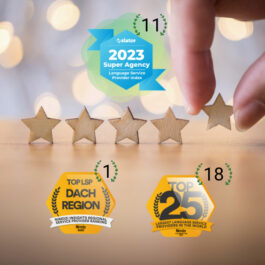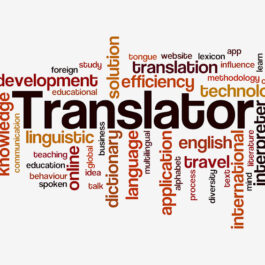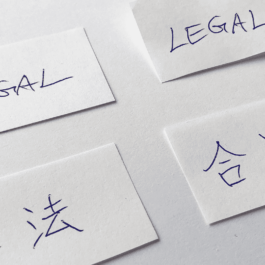What website operator doesn’t dream of their site appearing at the very top of web search results?
If you want to convince users across the globe to click on your localised website, view your products and services, and better still, make a purchase, we can show you how.
With a translation process that takes into account SEO optimisation, you can save your marketing budget and win customers.
Step 1: Clearly define and communicate your goals
Your website is your digital flagship with which you can welcome your customers, address them personally and take them along with you! You use your website to pursue specific goals and it is very important that you communicate these goals with your translation service provider before you begin localising your website. Why not chat for a while and give them as much information as possible about your business and your customers: Who do you want to reach, how and why? Any information about the company, your services or products, your target audience as well as your competitors is important to the project framework.
Perhaps your website is not yet SEO-optimised in the source language either? Get some advice about SEO optimisation before you start the translation process.
Step 2: Be aware of cultural differences
User search behaviour can vary dramatically from one target market to the next. That’s why it is important to take into account the needs of the relevant target markets. It is important to find out what criteria users apply when they search online. Google may be top dog among search engines, but SEO is also possible for other search engines such as Yahoo or Bing, or Baidu in China.
When localising a website, cultural aspects should also be taken into account. Writing conventions for addresses or telephone numbers, images or colour schemes should consider cultural sensitivities. Demonstrating intercultural competence will bring a significant advantage when it comes to achieving your goals.
Step 3: Keyword research
Keywords are paramount for the success of your website. In this step, you need to identify the terms to use to make it clear to a search engine what your website is about; Users’ search requests should be answered as fully as possible. Keyword research should be carried out for every market and adapted to search behaviour and search intention. A one-to-one translation is not always the best choice. A term that is rarely searched for in your target market is not a keyword. Instead, several alternatives should be monitored. Specialist tools can be used to analyse variants (alternative keywords) and calculate the search volumes and difficulty score for each. We recommend carrying out such an analysis before you prioritise or qualify your keywords.
Every SEO translation includes a keyword research step. Only after the localised keywords have been approved should you begin the website translation, integrating your keywords as you go.
Step 4: Content is king
For an SEO-optimised translation, the target text must be easy to read so that your visitor will spend a while browsing your website. Of course, the text must be free from errors, but it must also be unique. This means that it should not appear in an identical form anywhere else on the internet – and this also applies to single paragraphs and sentences. This rules out using a machine translation or standard translation process. Search engines can recognise machine translation and penalise it, which can lead to a lower ranking being given. The text should offer the user a high degree of value and it should be created for the target group using corporate language.
Do not create text just to make the search engines happy, but instead focus on your users and potential customers and create a web page that piques their interest.

Step 5: Work with SEO experts
Anyone who wants international success must speak their customers’ language – in every sense. Work with experts in the field of SEO who can create native-speaker quality, professional translations that convey the intention of the original texts and which match the stylistic expectations of the target market groups and their cultures. A specialist SEO translator knows the cultural and country-specific characteristics of your target group and target market and also possesses excellent SEO knowledge.
Only allow experts to translate and localise your content.
STAR Deutschland has the right language experts for your industry. In addition, the whole translation process will be supported by a qualified SEO expert. STAR only works with native speaker translators. We have a presence in over 30 countries, with 50 STAR branches and 1200 permanent employees. We have the experts for every project – including yours!
In summary
If you want to raise the global profile of your website, you absolutely must work with experts in multilingual SEO. STAR has both the expertise and the resources to help your website enjoy international success.
<!– wpml:html_fragment
–>
















